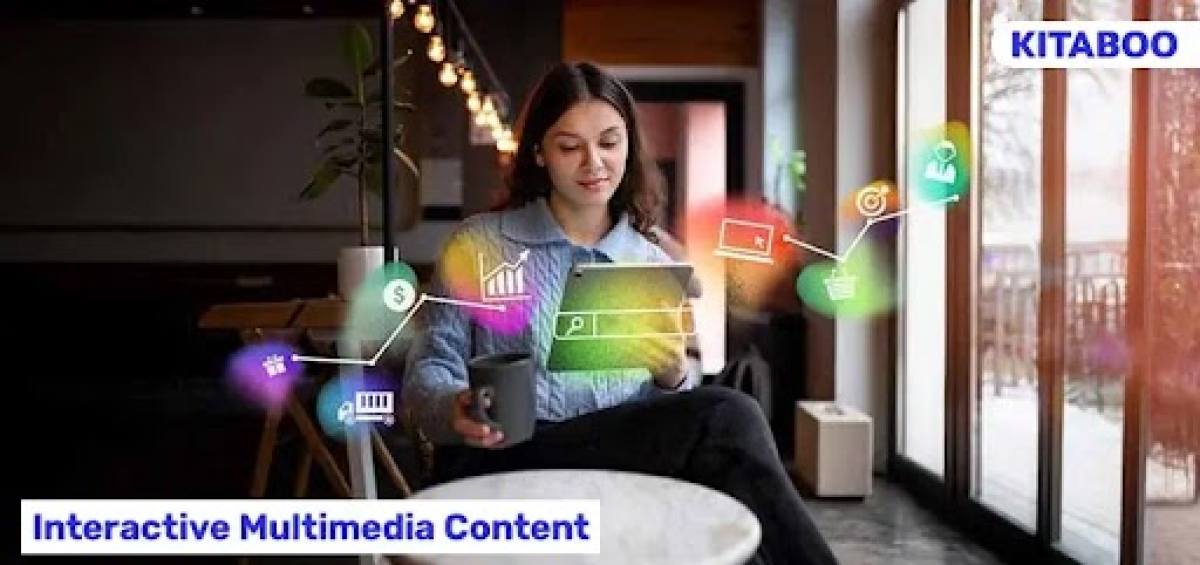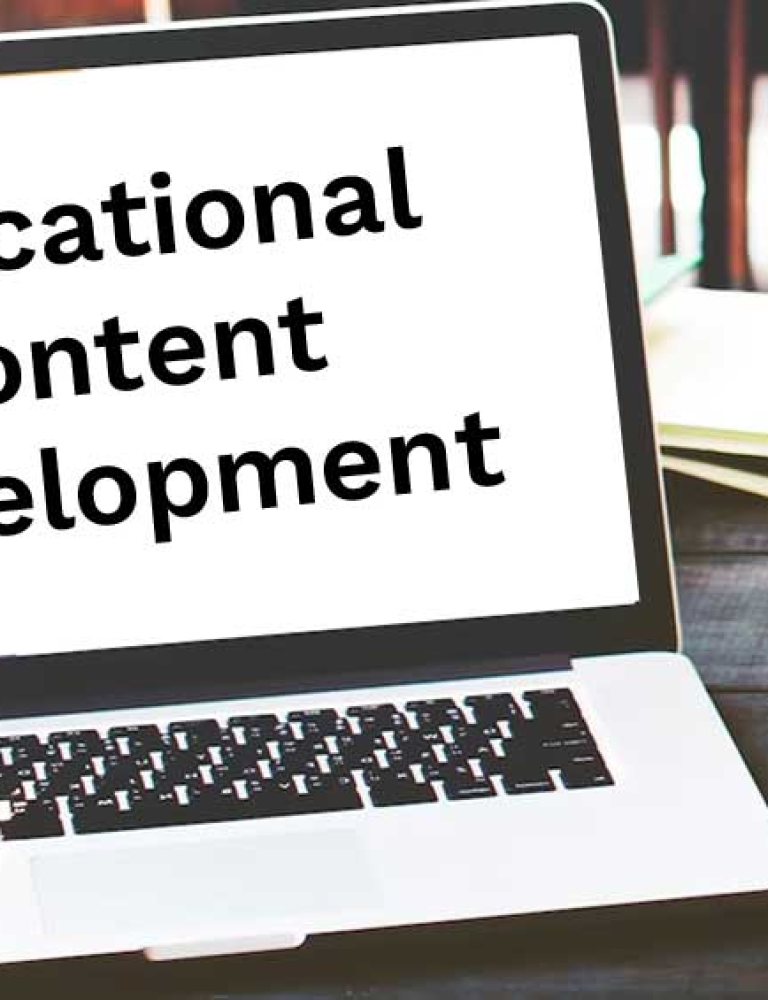Today, newer generations of learners are learning in very different ways from their counterparts five years back. Online learning is emerging as a go-to medium of learning at the college and professional level, especially as more consumers spend time online than ever before.
As of the second quarter of 2023, the average Internet user spends 6 hours and 41 minutes. This time frame is expected to increase as consumers get more dependent on the Internet for a wide slew of activities including learning.
On the other hand, the online education market size is expected to grow in revenues to $ 185.20 billion in 2024 and to $ 257.70 billion by 2028. The online learning market today is a competitive landscape with multiple players looking to capture market share. Ultimately, it is the quality, uniqueness, and delivery of content that will play a key role in this journey.
Businesses looking to distinguish themselves from the slew of players competing with them need to seriously invest in developing high-quality interactive multimedia content that’s engaging and accessible to a wide spectrum of learners.
Cloud-based digital textbook publishing platforms such as KITABOO are paving the way for publishers to build high-quality interactive educational content.
Let’s understand how higher education publishers can achieve this goal and benefit from early investments in interactive multimedia content.
Table of Contents:
I. What is Interactive Multimedia Content?
II. How Publishers Benefit From Interactive Multimedia Content
- Superior User Experience
- Boost In Conversions
- Improved Customer Engagement and Loyalty
- Wider Market Reach
- Enhanced Learning Outcomes
- Data-Driven Decision Making
III. How To Build Interactive Multimedia Content
- Make Early Investments In the Right Tech
- Upgrade Existing Resources
- Distribute Content Securely
- Drive Efficiency and Higher ROI
IV. Conclusion
What is Interactive Multimedia Content?
Interactive multimedia content comprises interactive content that’s presented as a mix of text, images, video, audio, eBooks, podcasts, polls, and slide shows. Interactivity may be introduced through elements such as gamification, adaptive learning, live simulated activities, and the use of social media elements like likes, shares, and comments.
The usage of interactive multimedia content in higher education is making learning more engaging, convenient, flexible, and addictive. Such content delivers a high-quality user experience and has the potential to cement a learner’s loyalty to your learning app, platform, or eBooks.
It is helping higher education publishers get more learner-centric and data-centric in their content development and business strategies and provide an immersive experience to learners.
How Publishers Benefit from Interactive Multimedia Content
Higher education publishers can reap multiple benefits by making an intentional shift towards interactive multimedia content in their strategies. Here’s a snapshot of opportunities:
1. Superior User Experience
As consumers spend more time on social media and other consumer apps, they are becoming accustomed to an interactive user experience.
By adopting a similar approach in higher education, publishers can deliver a superior user experience, and meet a learner’s interactive expectations. For instance, they can offer personalized learning plans, which are more relevant to the individual learner.
2. Boost In Conversions
As more consumers seek a higher level of engagement in all activities, they will prioritize the purchase of higher educational products that are interactive. Offering an interactive content product can help publishers improve conversations and, in turn, sales.
3. Improved Customer Engagement and Loyalty
Retaining learners can be a challenge as the novelty of a new product wears off. However, the introduction of elements such as gamification, for instance, boosts the learning experience, making it a continuous journey.
The use of rewards, challenges, and leadership creates an instant hook and encourages learners to stay on the platform for an extended period.
4. Wider Market Reach
The use of interactive multimedia content helps reduce learning barriers such as language and learning barriers.
It can help make the same piece of content accessible and relevant to a spectrum of users who are underserved. This benefit opens the doors to attracting more audiences and capturing more market share.
5. Enhanced Learning Outcomes
Ultimately, educational content aims to help boost learning outcomes such as understanding the fundamentals, retaining knowledge, building new skills, and scoring better grades.
The use of interactive multimedia content can help boost these outcomes, as it nudges learners towards self-learning and nurturing learning as a daily practice.
6. Data-Driven Decision Making
The shift to interactive multimedia content enables publishers to track learner engagement and build data-driven content based on usage and learner behavior. Digital textbook publishing platforms such as KITABOO, for instance, come with in-built AI-powered data analytics engines.
How To Effectively Build Interactive Multimedia Content
Building interactive multimedia content requires a mix of content development strategy, resources, and access to the right technology. Here are some guidelines to proceed with this transition.
1. Make Early Investments In the Right Tech
Traditional publishing processes are built to create physical textbooks and PDF eBooks.
However, the creation of interactive multimedia content needs investment in cloud-based, automated digital publishing technologies. Automation reduces manual interventions while enabling publishers to introduce interactive elements with speed and at scale.
For instance, KITABOO, a user-friendly cloud-based digital publishing interface, enables publishers to make the shift to producing interactive eBooks, in a seamless, hassle-free, cost-effective manner. Multiple stakeholders, such as instructional designers, editors, and authors, can collaborate on such a cloud-based platform in real-time.
2. Upgrade Existing Resources
Publishers don’t need to build content from scratch. An existing library of PDF or physical textbooks can be digitized, and fresh interactive elements can be added, giving the material a new lease of life. Higher education publishers can digitize existing content at scale by leveraging digital publishing technology.
For instance, PDF textbooks can be converted into interactive eBooks in the EPUB format, which enables reflowable content and the addition of multimedia resources, such as videos, audio representations, and infographics.
Such ebooks empower learners by enabling them to highlight text, adjust font styles and size, search for content quickly, and leave comments for themselves and their peers, thus building an interactive experience.
3. Distribute Content Securely
Seamless, secure distribution of interactive multimedia content is as important as creation. This is why your digital publishing stack must come with digital rights management capabilities and enable the distribution of content to authorized users only. Such a feature helps prevent plagiarism and the unauthorized use of painstakingly created content.
Publishers also need not use messaging apps and email services to distribute content or send content through attachments. Digital publishing platforms such as KITABOO enable publishers to offer a unified viewing experience while also sharing content seamlessly with authorized users.
4. Drive Efficiency and Higher ROI
As publishers make the shift to interactive multimedia content, they must prepare to publish content at scale. Bringing efficiency and a data-centric approach to content development, publishing, and distribution can help make publishing cycles more efficient, take products to market quickly, and raise ROI.
For instance, smart usage of digital rights management systems can help protect revenues, while running publishing operations with lean, data-driven teams can make them more cost-efficient.
The Conclusion
Building superior, innovative, interactive multimedia content requires investment in the right technology that enables your business to capture and retain learner audiences and stay ahead of the curve.
The best approach is to partner with a technology specialist who can gauge the unique needs of your business and deliver customized solutions at a cost-effective price point.
If your company aspires to create, publish, and distribute effective e-learning content, the digital textbook publishing platform KITABOO is geared with the right technology solutions to support you in your mission. Leverage our cloud-based digital publishing platform, which is available as a licensed version (one-time buy) as well as a subscription model.
Get in touch with us to start a conversation.
Discover How An Ebook Conversion, Publishing & Distribution Platform Can Help You
Kitaboo is a cloud-based content platform to create-publish & securely distribute interactive mobile-ready ebooks.
You May Also Like
-
From Idea to Impact: Educational Content Development
Blog,Digital Publishing,eBook solution / January 10, 2024
-
Create Captivating Interactive Books: A How-To Guide
Blog,Digital Publishing,eBook solution / February 29, 2024









